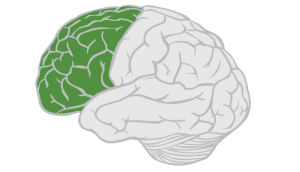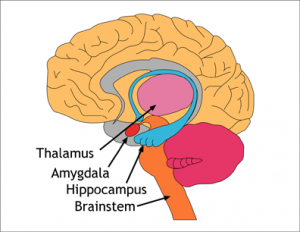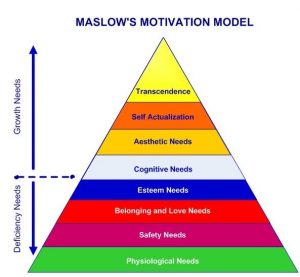Can non-native EFL teachers be as good as a native English speaker?
 I wasn’t born in the UK, or the US, or Australia, or South Africa. In fact, I wasn’t even born in a country where English is taught effectively in schools. I learned English growing up, as my interest in languages and media attracted me to one of the most widely spoken languages in the world. When I was 18, I realised I loved teaching and that there was a high demand for English teachers in… well, everywhere; so, I decided to become an EFL (English as a Foreign Language) teacher. Over the last ten years, however, my experience has shown that being a non-native EFL teacher can be tricky at times. It has nothing to do with my knowledge of English, my experience or my ability to teach. Nevertheless, the myth a non-native speaker isn’t as credible as a native one has impacted my career in a myriad of forms.
I wasn’t born in the UK, or the US, or Australia, or South Africa. In fact, I wasn’t even born in a country where English is taught effectively in schools. I learned English growing up, as my interest in languages and media attracted me to one of the most widely spoken languages in the world. When I was 18, I realised I loved teaching and that there was a high demand for English teachers in… well, everywhere; so, I decided to become an EFL (English as a Foreign Language) teacher. Over the last ten years, however, my experience has shown that being a non-native EFL teacher can be tricky at times. It has nothing to do with my knowledge of English, my experience or my ability to teach. Nevertheless, the myth a non-native speaker isn’t as credible as a native one has impacted my career in a myriad of forms.
After all, does the place where I was born determine the academic outcomes of my students?
Learning goals: become British
I learned American English first, which is probably Hollywood’s fault. As many other countries, Brazil is highly exposed to American media, such as films, TV shows and videogames. Throughout most of my English-speaking life, I had an American accent. As a teacher in Brazil, students tended to think I was American. When I lived in California, Americans commonly thought I was their compatriot when they first met me. It wasn’t until the conversation reached cultural roots or childhood that my credibility would plummet.
I’ve had a number of students request a different teacher, because they wanted a native one. I was turned down in job applications, because I couldn’t provide a British or American passport. I got so used to receiving this treatment, I would settle for a lower pay than my native-speaker colleagues, even though we were working at the same school, doing the exact same job. When I first arrived in the UK, I thought I was never going to get a job as an English teacher and was pleasantly surprised to find it wasn’t the case. In my first job interview for a teaching position, I had the following exchange:
- I don’t have a British accent, is that ok? – I nervously asked.
- Why would that be a problem? – the puzzled interviewer responded.
The question caught me by surprise, I did not know how to answer it. Why would it be a problem?
Students often say when they first arrive in the UK for their study abroad experience and are asked about their objectives: “I want to speak like a British person”. Some are disappointed to realize their teacher may not be British. Fair enough. You came all the way to the UK and paid a lot of money for your course to realize your teacher has the same nationality as you. It does sound disappointing. Stick around though, I have a few questions for you:
Are you studying English to communicate effectively, or to become British?
If you answered the latter, I’m sorry, but I cannot teach you that. I’m not British. In fact, as a vegan football loather who can’t samba to save her life, I’m not a very good Brazilian either. Having a certain nationality doesn’t come with an onset of traits you can absorb or copy; and there isn’t a level of Britishness one can acquire. People are very different within nationalities and that includes the way they speak.
Should only native speakers teach their language?
If you hear an American, a Brit, an Irish and a South African having a conversation, you’ll notice there is a big difference in the pronunciation, the choice of words, the expressions and even the meaning of certain words. That’s because language is a highly mutable phenomenon, which adapts to the communication needs of its users. English today is different from 10-year-ago English, and that’s because the people who speak it are not the same as ten years ago. People change and so does language. New vocabulary emerges every day, along with expressions, ways of pronouncing certain words, etc. Language is not an exact science like mathematics, you can’t just learn a certain grammatical formula to communicate effectively. Learning a language means understanding the context in which you’re using it.
But, are differences between an American and British speaker, for example, that far apart from the differences between a British and a Turkish national speaking English at a fluent level? Won’t there be, in both cases, different accents, different word choices, etc?
I dare say, there are more differences between the English of my British and American friends, than there is a difference between my Brazilian sister’s (who also lived in both countries) English and both those nationalities’.
I have taught Portuguese before, and I regret to say I am not very good at it. One of my British colleagues at Stafford House knows Portuguese way better than me. She studied it for many years and knows grammar rules I didn’t even realise existed. My knowledge and experience with English are way better than my Portuguese. Should I really be teaching my native language?
Who are you going to use your English with?
If you live in a country where English is not the main language, or if you live in a city like London or New York, there is a great chance most of the people you speak English to are non-natives. World-wide, there are more non-native speakers of English than natives – estimates vary: from 330 to 360 million people speaking English as their first language and between 470 million and 1 billion people speaking English as a foreign language. Therefore, if you intend to use your English with native speakers only, you’ll be limiting your range of social and business opportunities.
Is speaking in a certain way more important than being understood?
When we speak a language, any language, we do it to express an idea. Whether this message is received and understood determines if effective communication actually happened. If where you live, work or socialize, the way you sound when you speak affects how people perceive you, you might want to spend more time polishing your accent rather than learning how to organize ideas and arguments, for example. That’s understandable. How harmful perpetuating this approach can be is a whole other topic. The fact is, a non-native speaker can still help you speak more like a native, even if they don’t have the exact accent you are pursuing. That’s because, for starters, you don’t speak with your teacher only, especially when you are in an English speaking country. Also, their ability to teach a language isn’t necessarily affected by the way they speak. Which leads us to the last question.
In a teacher, is their ability to teach less important than their place of birth?
It might have happened to you in secondary school, university or a course: the teacher is a leading expert in their subject, but you don’t have a clue what there are saying. Being a good engineer doesn’t necessarily mean you are good at teaching it. You might have this lecturer with a brilliant resume and still not learn much from them. The other way around is often true: an average engineer is really good at teaching it, and their students go on to become better engineers than their tutor.
This happens because learning isn’t about listening to an expert and absorbing as much information as they’re sharing with you. Effective teachers are there to broaden our minds, help us learn on our own and with each other, develop critical thinking and debate issues. Teachers are there to facilitate learning, not to tell you what to think, how to speak and what’s right or wrong.
When it comes to teaching a language, of course knowledge in the subject is important, but how much you learn will depend on your tutor’s ability to teach. It is known that in EFL teaching, a low TTT (teacher talking time) leads to better learning outcomes. That means that being less exposed to your teacher speaking English and instead speaking more with your classmates, listening to audios, watching videos, etc, is probably more beneficial than simply having a native speaker in the classroom (unless, of course, the native-speaker is a properly trained teacher who does exactly that).
I’m not saying there aren’t other effective approaches to teaching English, but this is one we know to be effective. I’m also not saying you can’t learn from talking to a native speaker. Of course, you can. The question here is: are native speakers better teachers than non-native ones? I suspect that, at this point, you either agree with it or you don’t, so I’ll leave this question unanswered.
Linguistic Imperialism
As described by Robert Phillipson in 1992, this notion that native English speakers are superior and that we must learn how to be more like them comes from a phenomenon he called Linguistic Imperialism. In his book, Phillipson analyses the processes through which English has become an international language, which is deeply connected to a history of oppression.
Being born in Britain or the US, for example, gives you more social status in a third world country than having a better academic history. This is a discussion, however, that requires a whole other article. For now, whether you speak English as your first, second, third or tenth language, we can merely accept the fact that it has become a lingua franca across the globe, so we might as well use it.
And since we are using it to communicate with people from different countries, cultures, backgrounds and ethnicities, why not try to be as adaptable and open as possible? Why not try to make sense of why people speak the same language in different ways and embrace our accents and differences, helping other people understand us and doing our best to understand them? More than 1 billion English speakers wouldn’t all speak the same way, and that’s okay.




